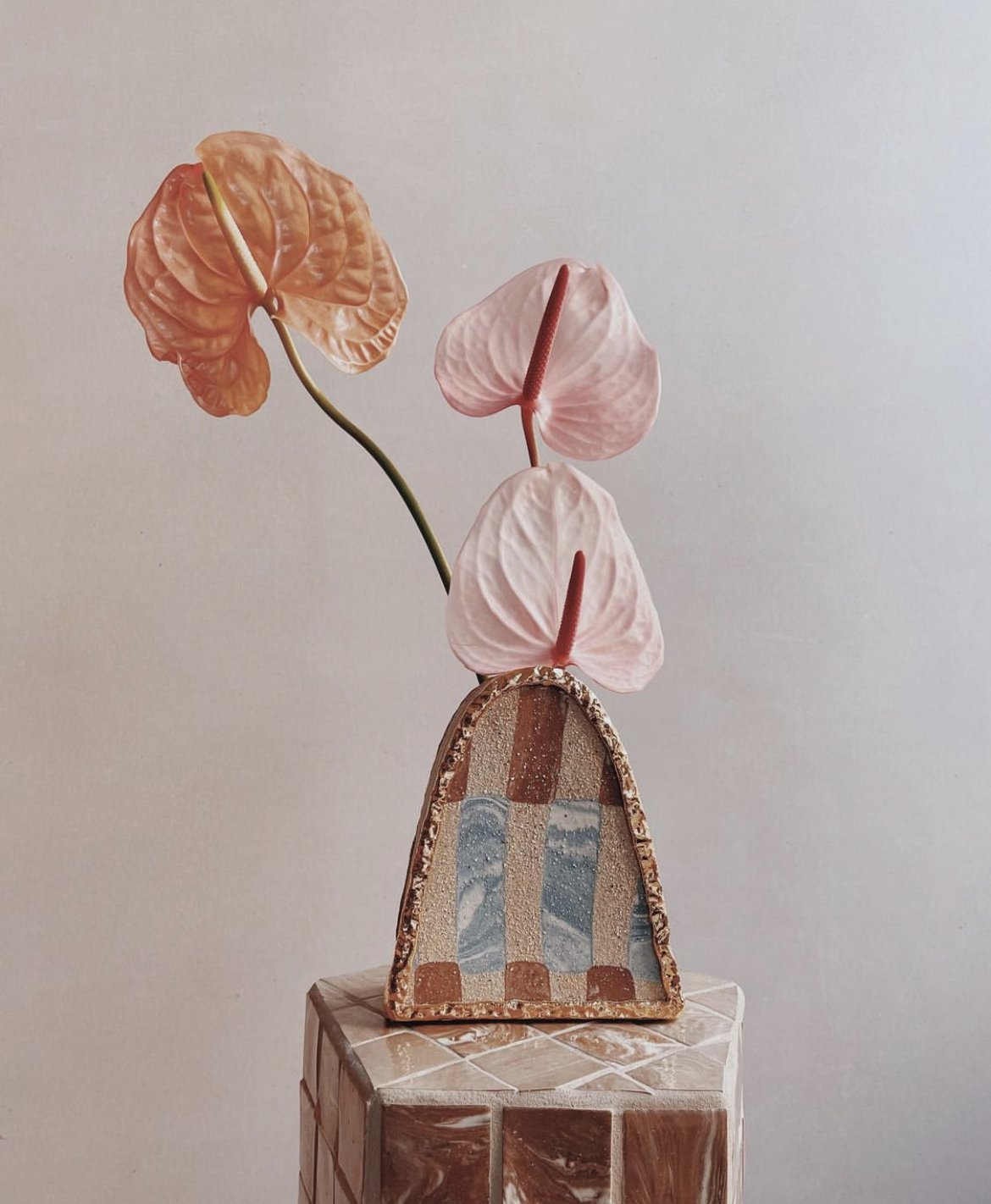NERIKOMI
The Nerikomi collection represents Tantri Mustika's exploration of the traditional Japanese clay patterning technique from which it takes its name. What began as experimental pieces using clay offcuts evolved into a body of work that brings together historical technique with contemporary expression. "I discovered a new way of pattern making while still working with marbled coloured clay," Mustika reflects on the collection's turning point, marked by two pieces created for FOND in 2022: a checkered vice versa vase and a striped octagonal vessel. These works established the collection's interplay of precise patterning and organic variation.
The Nerikomi technique reveals Mustika's developing approach to coloured clay manipulation. Her work embraces what she describes as "perfectly imperfect" patterning – where controlled techniques meet the natural tendencies of the material. The collection features contrasting colours and surface designs that create visual rhythms across each piece. The Nerikomi collection maintains a dialogue with Mustika's earlier work, particularly in its forms – flat-faced vessels reference her earlier mountain vases, while the surface treatments expand into new territory with what she calls "more is more pattern on pattern type of feels."
The evolution of these pieces shows Mustika's growing understanding of the Nerikomi technique. "I figured out how to control the patterning a little more," she explains. "My clay marbling techniques and learning how to get different types of marbled effects is heavily informed by Nerikomi techniques." This cross-pollination of skills reflects her methodical approach to material exploration. Key works from this period include the maroon and beige vessels, which demonstrate the colour relationships and pattern work that define the collection while balancing technical elements with artistic spontaneity.
The Nerikomi collection represents both a technical development and an expansion of Mustika's artistic vocabulary. While continuing her use of coloured marbled clay and slab-built construction, these works explore new creative territory, demonstrating how traditional techniques can be interpreted through contemporary vision. The collection serves as a bridge between her terrazzo work and future explorations, marking another chapter in her evolving ceramic practice.








